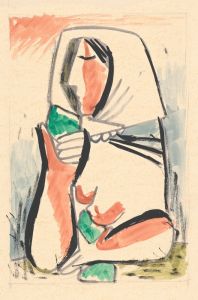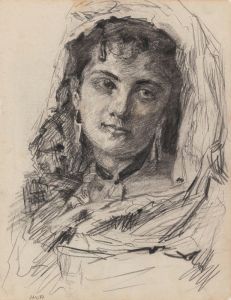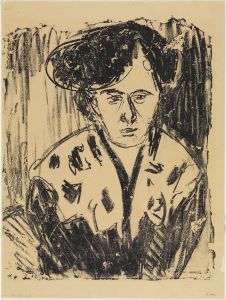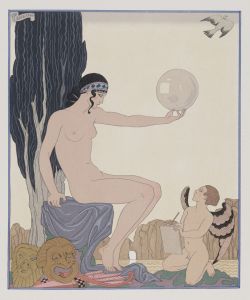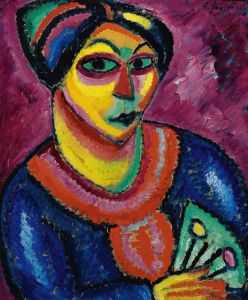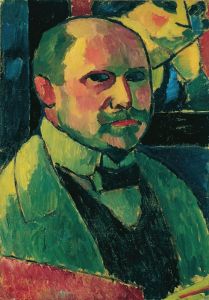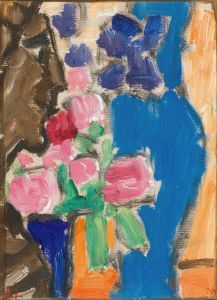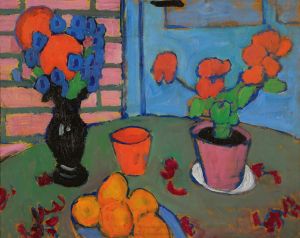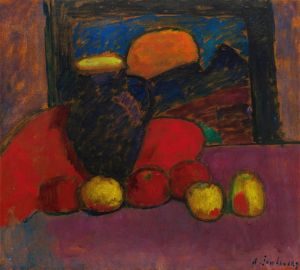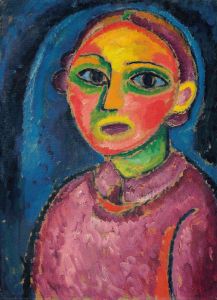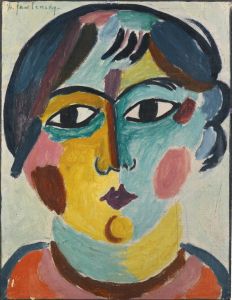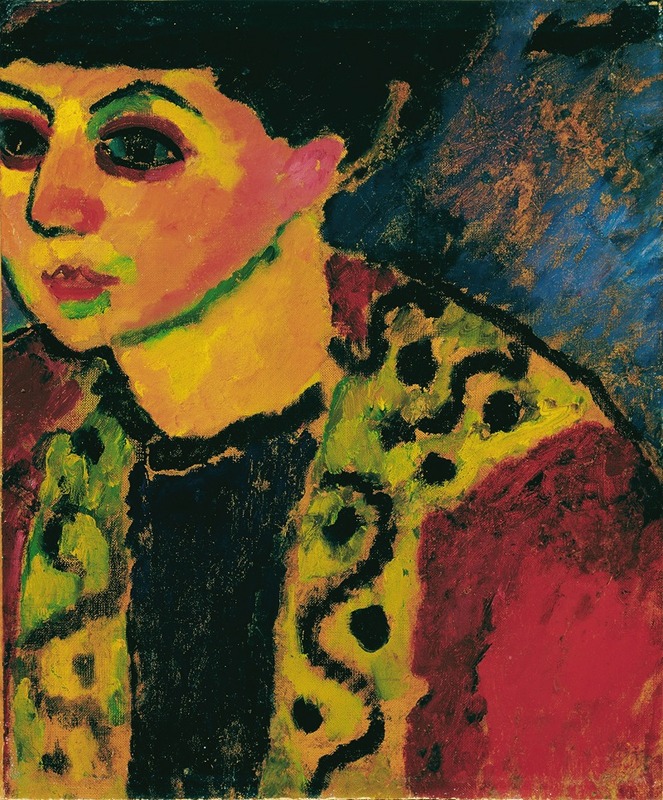
Dame vor blauem Grund
A hand-painted replica of Alexej von Jawlensky’s masterpiece Dame vor blauem Grund, meticulously crafted by professional artists to capture the true essence of the original. Each piece is created with museum-quality canvas and rare mineral pigments, carefully painted by experienced artists with delicate brushstrokes and rich, layered colors to perfectly recreate the texture of the original artwork. Unlike machine-printed reproductions, this hand-painted version brings the painting to life, infused with the artist’s emotions and skill in every stroke. Whether for personal collection or home decoration, it instantly elevates the artistic atmosphere of any space.
"Dame vor blauem Grund" (Lady Against a Blue Background) is a painting by the Russian-born expressionist artist Alexej von Jawlensky. Jawlensky was a prominent figure in the early 20th-century art scene, known for his vivid use of color and bold, emotive style. He was associated with the German Expressionist movement and was a member of the Blue Rider (Der Blaue Reiter) group, which included other notable artists such as Wassily Kandinsky and Franz Marc.
Jawlensky was born in 1864 in Torzhok, Russia, and began his artistic career in the late 19th century. He moved to Germany in 1896, where he became deeply involved in the avant-garde art community. His work is characterized by a focus on the human face and figure, often using vibrant colors and simplified forms to convey emotional and spiritual depth.
"Dame vor blauem Grund" is a prime example of Jawlensky's mature style, which he developed during his time in Germany. The painting features a female figure set against a striking blue background. The use of color is particularly significant in this work, as Jawlensky believed that color could express emotions and spiritual states. The blue background serves to highlight the figure, creating a sense of depth and contrast that draws the viewer's attention to the subject.
The composition of the painting is both simple and powerful. The figure is depicted with bold outlines and flat areas of color, a technique that reflects Jawlensky's interest in abstraction and his desire to move away from traditional representational art. The woman's face is stylized, with exaggerated features that convey a sense of inner life and emotion. This approach is typical of Jawlensky's portraits, which often focus on the psychological and spiritual aspects of the sitter rather than their physical likeness.
Jawlensky's work was influenced by a variety of sources, including Russian religious icons, Fauvism, and the work of other Expressionist artists. His interest in spirituality and the inner life of his subjects is evident in "Dame vor blauem Grund," where the use of color and form creates a sense of transcendence and introspection.
Throughout his career, Jawlensky continued to explore the possibilities of color and form, creating a body of work that is both diverse and cohesive. His paintings are held in high regard for their emotional intensity and innovative use of color, and they have been exhibited in major museums and galleries around the world.
"Dame vor blauem Grund" is a testament to Jawlensky's skill as a colorist and his ability to convey complex emotions through simple, yet powerful, compositions. The painting remains an important example of early 20th-century Expressionism and continues to be studied and appreciated for its artistic and historical significance.






